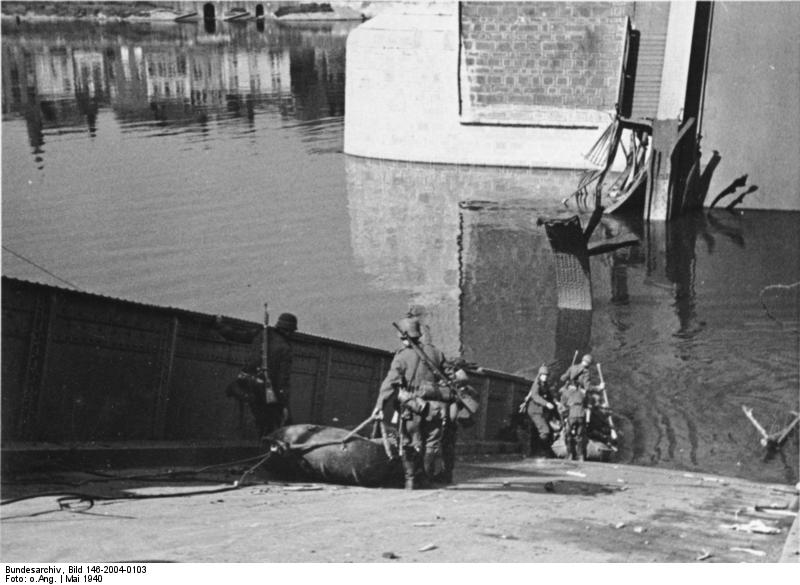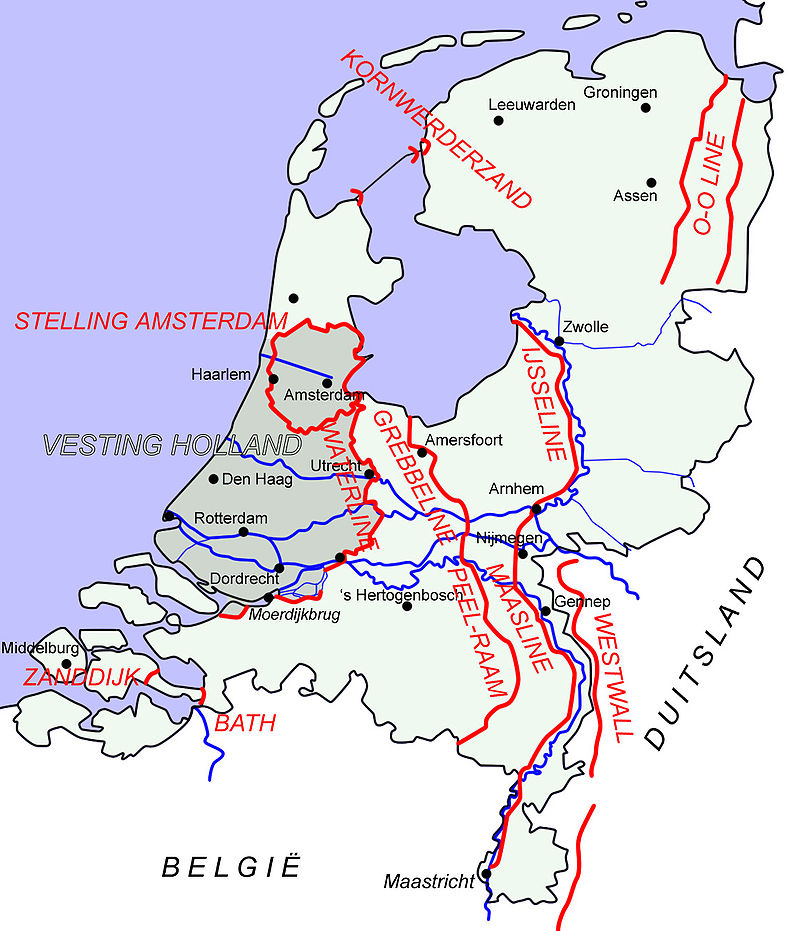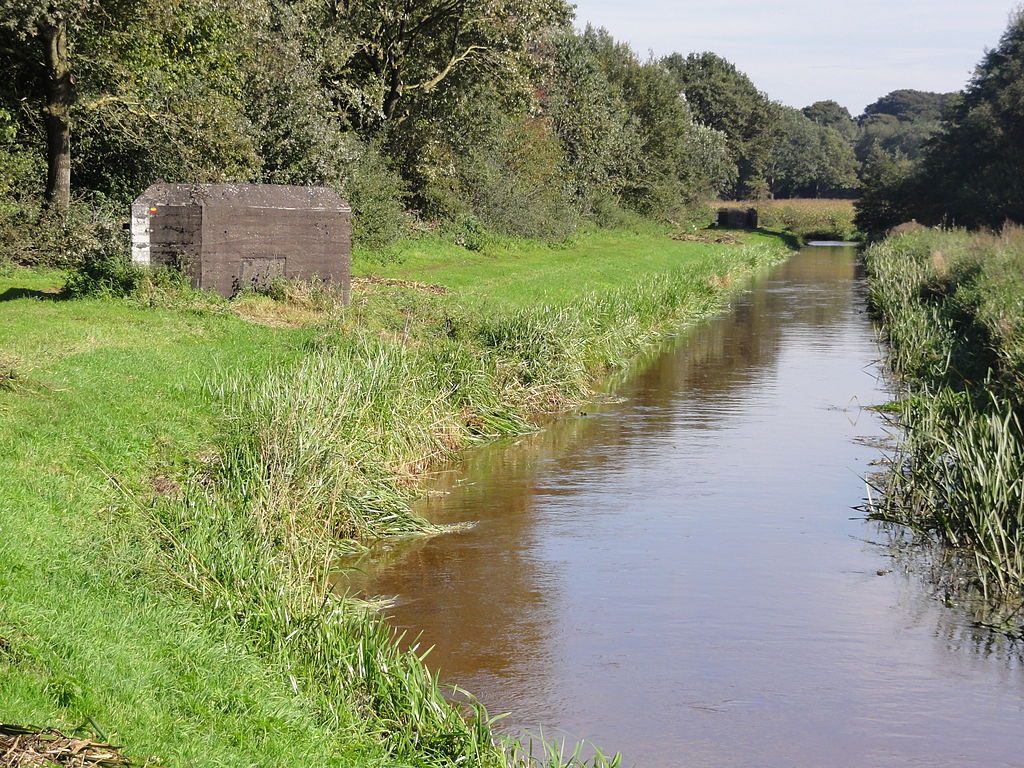Dutch Resistance in World War II – Part 1: De Slag bij Mill Posted by Sten on Apr 15, 2019 in Culture, Dutch Language, Dutch Vocabulary
In anticipation of the dodenherdenking and the celebration of the bevrijding of the Netherlands from the German occupation during World War II on May 4 and 5 and the fact that 2019 marks 80 years since the start of World War II in 1939, I am writing a series on how the Dutch got sucked into the war, and how they fought and resisted the Nazi occupation. In this first part, we will explore how the war started for the Dutch, looking at the Slag bij Mill (Battle of Mill).
Other posts in this series:
The Dutch Resistance in World War II – Part 4: De Engelandvaarders
Bruggen Opblazen
May 10, 1940, 3:50 a.m. In the dark of the night, a pantsertrein (armored train) crossed the grens (border) at Kerkrade, in the far South of the Netherlands, meant to get behind the defense lines to unload troops, like a Trojan horse. Five other pantsertreinen made their way to other bruggen (bridges) along the Dutch defense lines with the same objective.
German soldaten (soldiers), vermomd (disguised) as Dutch marechaussees (military police officers) entered the country to secure several bruggen. A fleet of the Nazi Luftwaffe (German: air force) flew in to drop parachutisten (paratroopers) all over Dutch territory. A sheer overmacht (dominance) that the Dutch could never beat.
However, the Dutch got their hands on some of the documenten (documents) of Fall Gelb (German: case yellow), the German plan for the invasion of the Netherlands, Belgium, Luxembourg and France. Because of this, they could at least prepare a bit. Once they heard the Germans would infiltrate the country, they placed springladingen (explosive charges) on vital bridges to stifle the Dutch opmars (advance).
Toeval en Verraad
Due to toeval (coincidence) and verraad (treason), the brug that crosses the Maas at Gennep, close to the German border, was taken by the Germans. The other bruggen were blown up in time. Therefore, only one out of the six pantsertreinen could breach the Maaslinie. At 4 a.m., Panzerzug No. 1, followed by a regular German train carrying about 800 soldiers, went on its way to get behind the Dutch Peel-Raamlinie.
The Peel-Raamlinie, or Peellinie in short, was fortified with the peelkanaal, an artificial canal that had a spoorbrug (train bridge) at the small village of Mill. With the inlichtingen (intelligence) the Dutch had secured, they had prepared this defense line. However, nobody had told them that the Maaslinie at Gennep, only about 15km (10 miles) away, was breached already!
Upon seeing the German pantsertrein, a Dutch officer even remarked: “Ik wist niet dat wij die dingen ook hadden” (I did not know we also had those things), not realizing it was the enemy that went full steam ahead to breach the defense line. Only when the train crossed the peelkanaal, the Dutch soldaten realize that it is a German Panzerzug they are dealing with! They quickly begin building a versperring (barricade) on the rails.
Achter de Linie
At 4.45 a.m., the German train drops more than 800 troops behind Dutch lines. One group heads north, one group heads south, to take over the Dutch kazematten (pillboxes) and stellingen (positions). The train tries to get in touch with their Generalkommando?!?!?!? to deliver the good news, but they get no connection. They decide to send the armored train back.
But the Dutch had set up their blokkade (blockade). The train stormed back at full speed, crashing hard at the blokkade and derailing.
The Dutch soldaten, despite being fewer in numbers, fight valiantly. The slag (battle) goes on for hours and hours – but the Germans, with their artillery and bombers, cannot be beat. The Dutch retreat to Den Bosch and Uden. In the early morning of Saturday, May 11, the Slag bij Mill is over. 30 Dutch soldaten and 7 burgers (citizens) died in the attack, and more than 700 were taken krijgsgevangenen (prisoners of war). The fight had to be continued at the next line of defense, at Den Bosch and already at the Vestinglinie, which defends the most populous and important parts of the Netherlands – the Randstad. Or did the war already begin there, too? That will be explored in the next post.
Today
This story was mostly made using the websites of Stichting Sporen van de Oorlog and Zuidfront Holland. These sources are in Dutch, but provide a lot more detail to all aspects of this Slag and other parts of the inval (invasion) of the Germans into the Netherlands.
There are several oorlogsmonumenten (war monuments) around the Slag bij Mill. The organisations mentioned above are also still active in keeping the memory of these events alive and gathering even more information for accuracy. In the video above, they unveil a new information panel about the Slag bij Mill.

Build vocabulary, practice pronunciation, and more with Transparent Language Online. Available anytime, anywhere, on any device.







Comments:
Errol:
Thanks, Sten. Very interesting and informative.